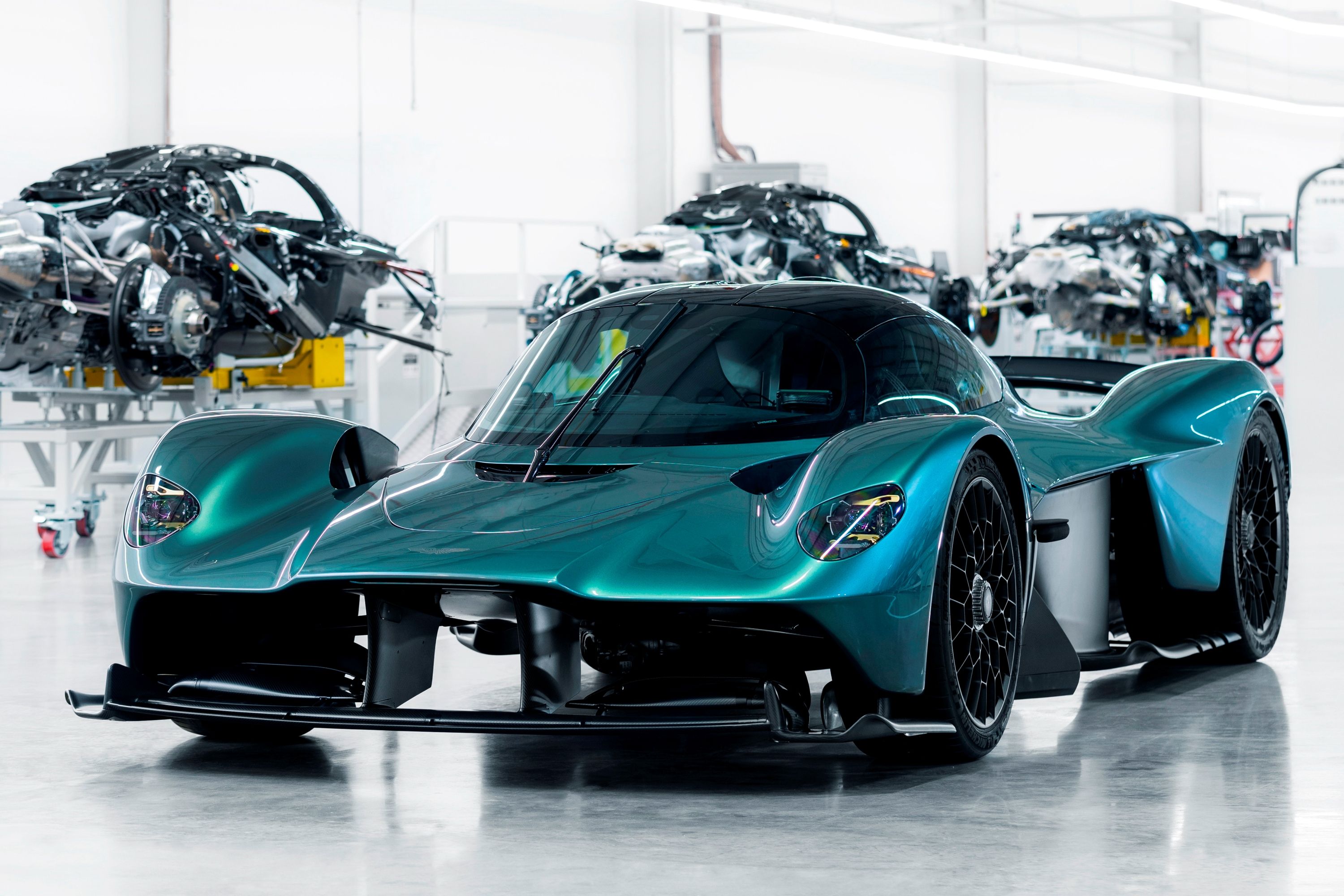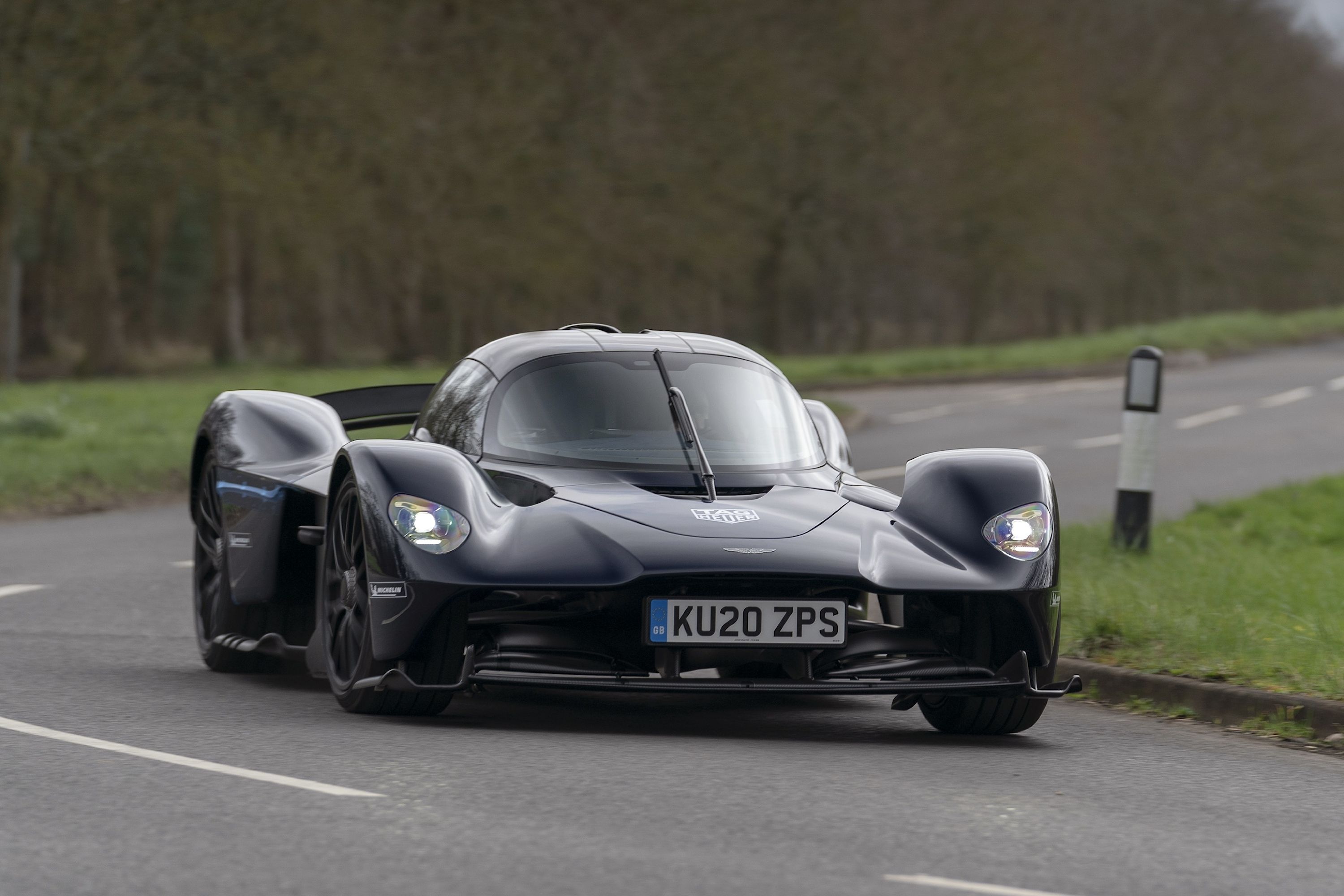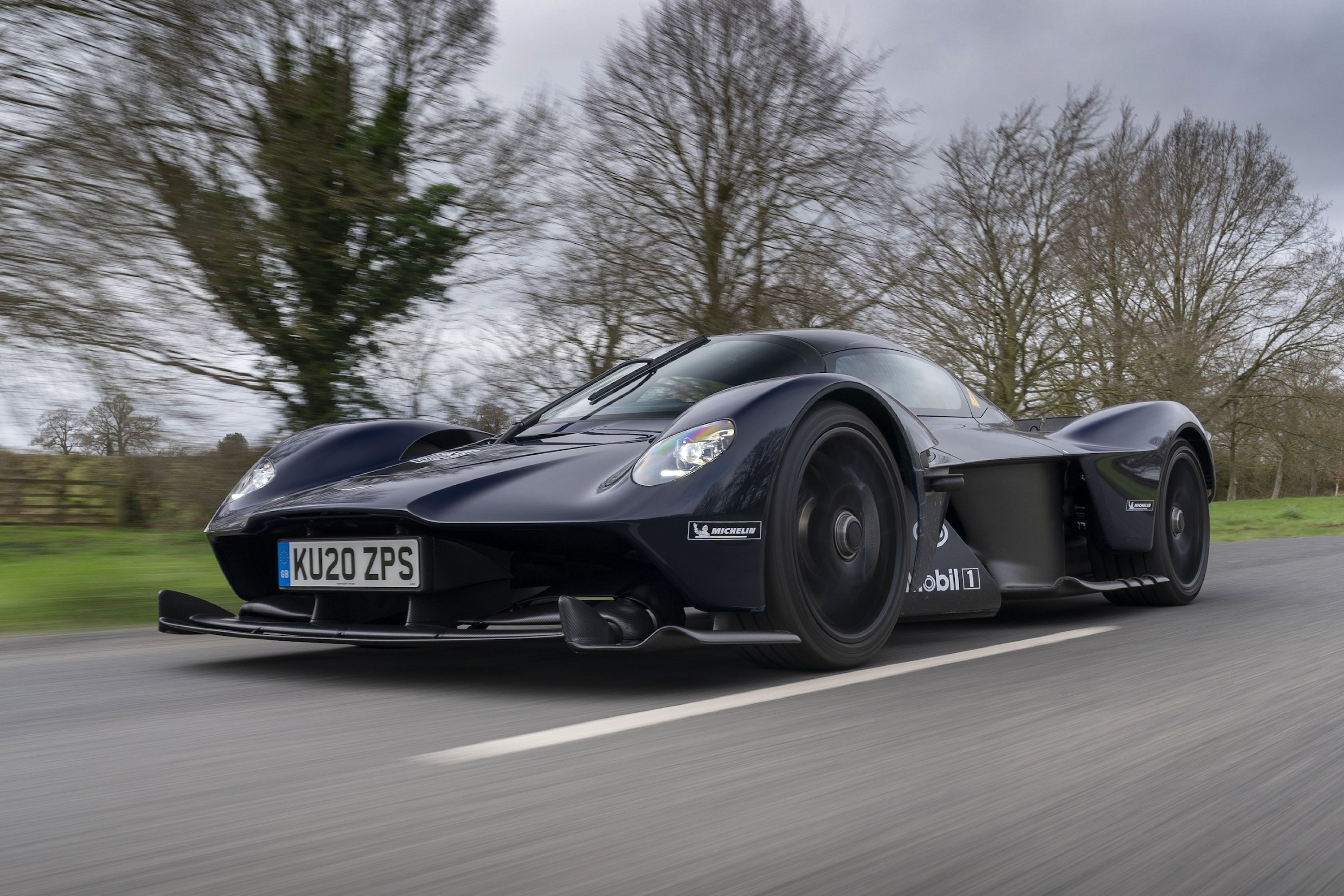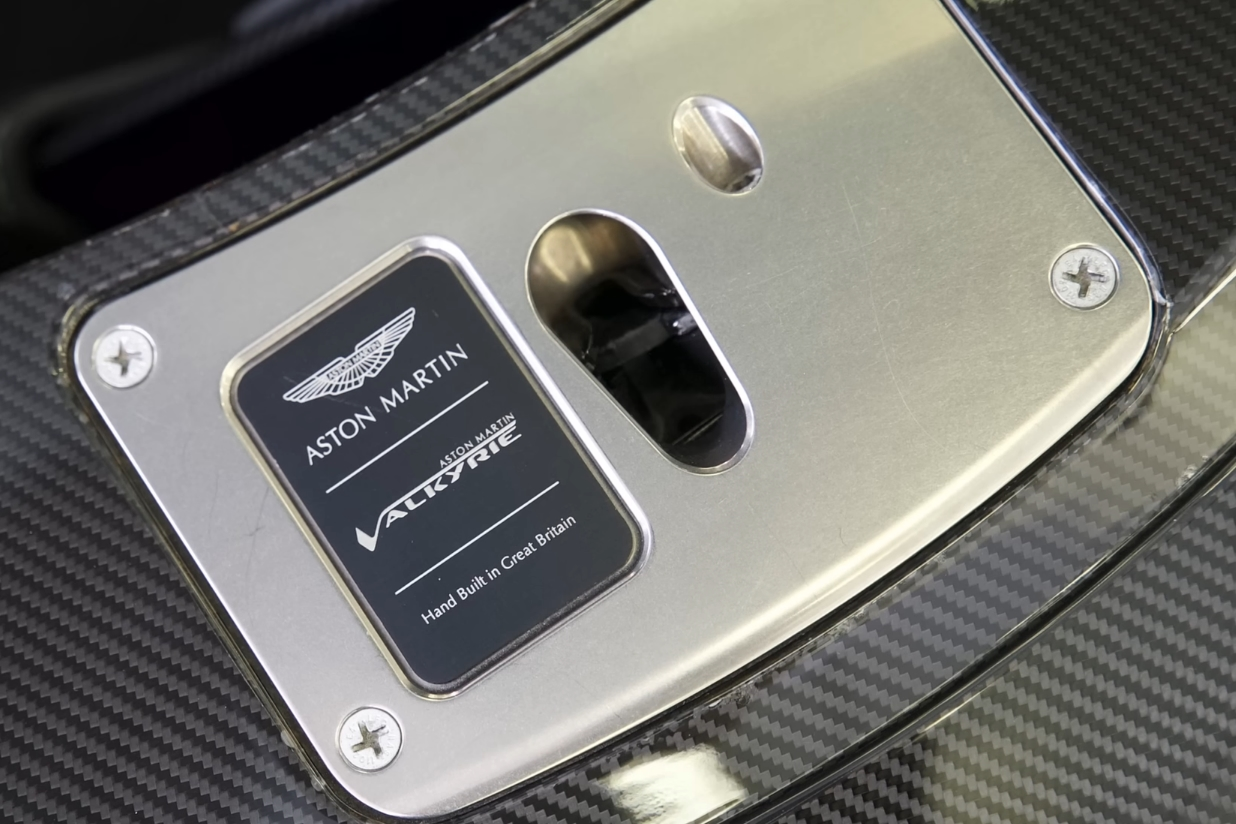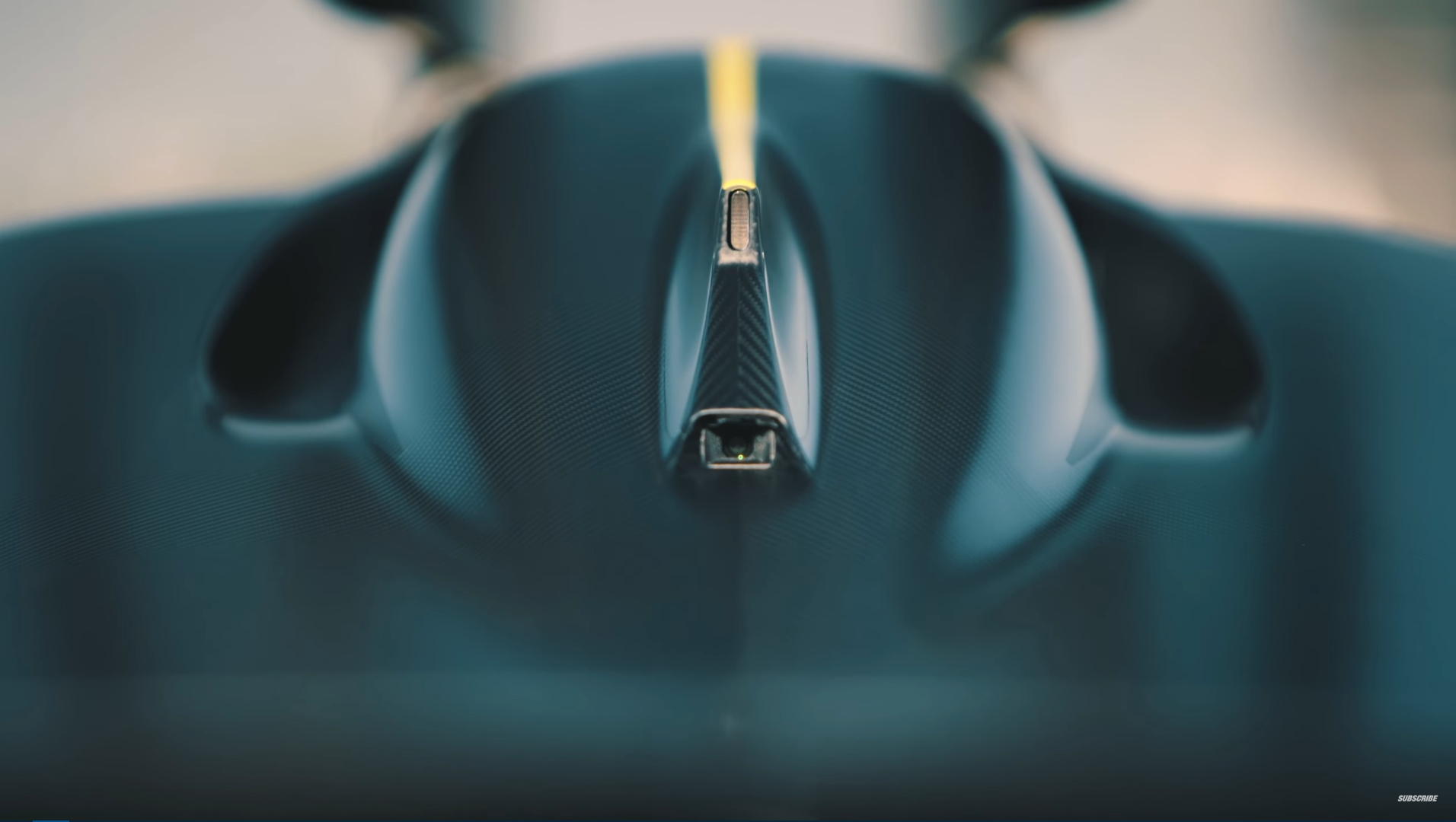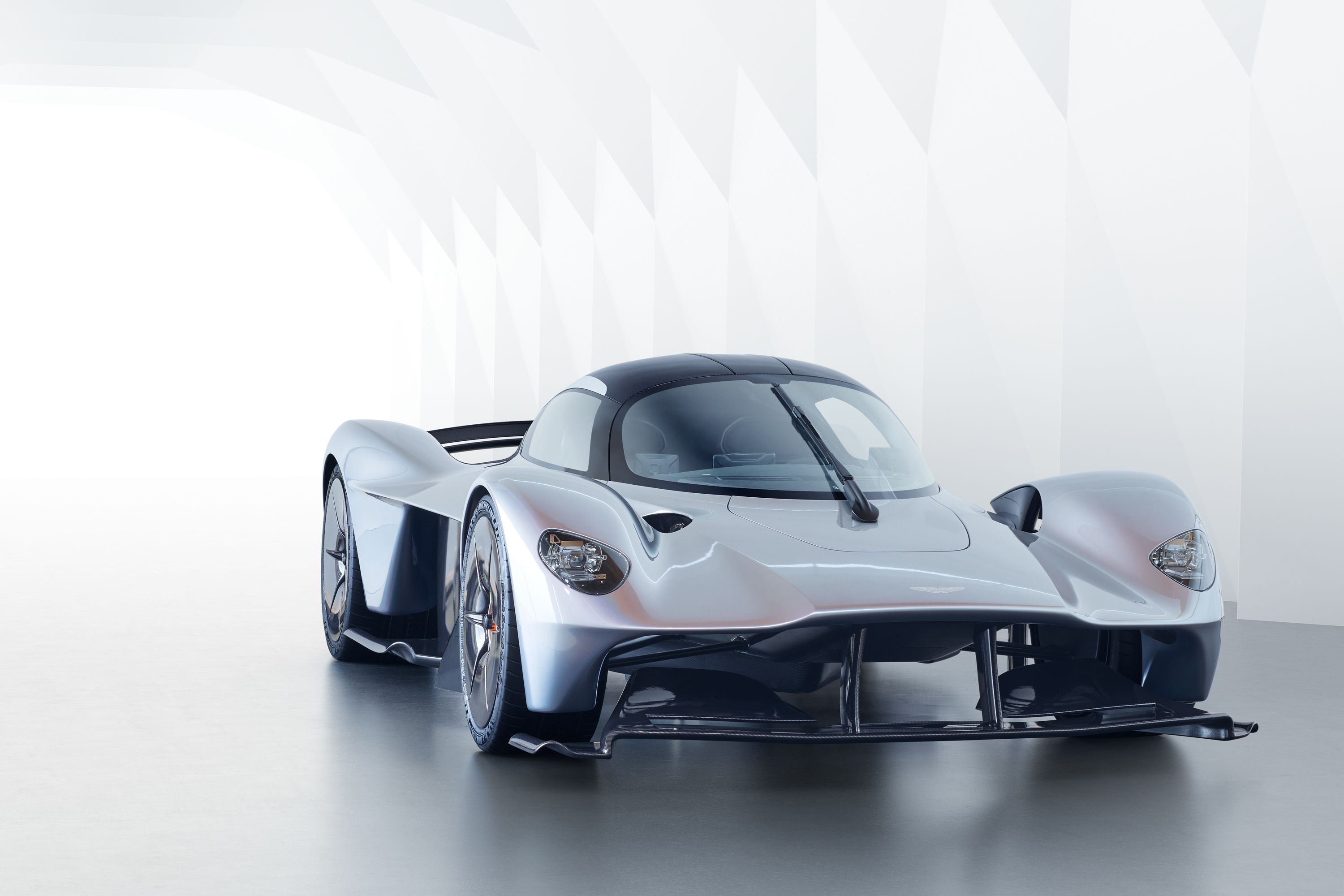
After a gestation period as long as that of the spectacular Mercedes-AMG ONE (the only other hypercar worthy of claiming direct influence from the world of Formula 1), the Aston Martin Valkyrie has finally begun making its way to customers, and this momentous occasion has enabled us to learn much more about it than ever before. First drive impressions of the hypercar are now out, with the engineers who worked on the car revealing plenty of interesting tidbits about the car's development and nerdy features.
Shorter, lower, and wider than a Porsche 911, the brainchild of Red Bull Racing genius Adrian Newey generates 1,001 horsepower from a Cosworth-developed 6.5-liter V12 and a hybrid e-motor. All of that performance is crammed into a package that, in its dry state, weighs just under 2,800 pounds. In its most extreme configuration, the car can generate as much as 4,180 lbs of downforce. Oh, and the Aston Martin Valkyrie engine revs to 11,100 rpm.
Amazing specs, but we're only scratching the surface.
1. The Windshield Wiper
You may know that the Valkyrie features fully active torsion bar suspension - a first for any road car in the world - but did you know that the windshield wiper arm is connected to a torsion bar too? That was done so that the wiper could effectively wrap itself around the curved windshield, and developing this single component took over a year. Adrian Newey didn't even want the Valkyrie to have a wiper (or license plates, but we'll get to that), so Aston needed to make sure it would be worthy of its place on the $3 million hypercar. Interestingly, Aston Martin had to make use of a wind tunnel designed for trains, as it was the only facility capable of simulating rain at the speeds that engineers needed.
Moreover, this wiper was supplied by the same company that equipped the Space Shuttle. The freakin' Space Shuttle!
2. License Plate Holder Is A Storage Unit
Newey said that license plates would ruin the aerodynamics of his elegant design, but to make the Valkyrie road legal, engineers had to find a way to incorporate them. At each end, the brackets are shaped to improve airflow, but the holder in front is especially noteworthy as it opens to reveal a hidden first aid kit. Although, since most crashes happen at the front of a car, this may prove to be a nearly pointless feature. There probably wasn't anywhere else to put such a thing anyway - the front trunk is barely capable of housing a few Snickers bars. Regardless, it's amazing that the kit is even included on a car that is as focused on weight saving as this.
3. The Wings Badge On The Nose
The iconic wings badge appearing on all Aston Martins is traditionally made of stainless steel and is a pronounced little identifier. But this would not do for the designer who is arguably Formula 1's leading aerodynamicist. Newey said the disruption of airflow caused by the raised badge would impede aero efficiency, and the added weight of so much metal (the sarcasm here should be obvious) would also be a negative factor. Thus, Aston created an etched aluminum badge measuring just 40 microns thick (30 microns thinner than a human hair) that is glued onto the bodywork and then covered with a coat of clear lacquer. This reduced weight by a whopping 99.3%. As much as we mock, these are the sorts of technical details that give us 'the fizz.'
4. The Ministry of Defence Thought Aston Was Building A Stealth Plane
As one climbs over the sills and into the Aston Martin Valkyrie interior, stamped titanium plates that add to rigidity inform entrants of the special machine that they're about to step into or out of. The lightweight metal is also used in other areas of the car, and Aston Martin ordered so much of it that global prices rose. As if that wasn't amusing enough, the UK's Ministry of Defence gave Gaydon a ring to find out what all the titanium was for; the last time anybody ordered this much of the stuff, it was Lockheed preparing to construct the legendary SR-71 Blackbird stealth plane.
5. The World's Smallest Center High-Mounted Brake Light
The Aston Martin hypercar lays claim to the achievement of fitting the world's smallest center high-mounted brake light, but it could have been even more minuscule. Aston Martin says that the original component provided the required luminescence to pass roadworthiness inspections, but it had to be made slightly thicker just to fit the EU mark on the lens that announces certification. In addition, the license plate lights on the car are also the world's smallest. Clearly, an obsession with infinitesimal detail has permeated every single aspect of this car's extraordinary design and development cycle.
Bonus: The Wing Almost Required Replacing Every 25,000 Miles
Because of the stresses that a car capable of generating so much downforce endures, especially in high-load areas like the rear wing, the Valkyrie's rear wing flexes. In the original design, this component was so lightweight and so heavily affected by the weight of the air at high speeds that it would have required replacement every 25,000 miles as part of the service schedule. Most Valkyries will never cover a tenth of that distance, but it would have been an inventory headache and a frustration for owners. Thus, a new design was eventually approved, one that only requires the wing to be replaced at the end of the car's lifecycle, which is 100,000 miles.
While owners will be glad that such a massive change is no longer necessary, there are other maintenance headaches. That bespoke engine requires a rebuild every 50,000 miles, and the unique gearbox needs to be torn apart and refreshed after just 31,000 miles. That's what you get in an F1-inspired car designed by a motorsports maestro who doesn't care about comfort and convenience.
Notable Mentions
We mentioned how weight was obsessively monitored in the development of this hypercar, so here are some interesting details: Each seat weighs just 17.6 lbs, and each door (including glass and mechanisms and so on) weighs only 18.5 lbs. Even the wheels weigh more than that, and the tires weigh more than the wheels.
The carbon fiber intake plenum? That's also too heavy, somehow, so Newey demanded that no clear coat be applied to it, saving 80 grams.
The Valkyrie's computer has some 15,817 adjustable parameters, so if you own and use one long enough, it can be infinitely refined to your driving style - assuming you don't annoy Aston's engineers with too many requests, as F1 drivers would.
In track mode, the car is so low to the ground that high track temperatures can negatively impact cooling efficiency, even if the ambient air is relatively cool.
The car is geared to 267 mph but is limited to 208 mph, as outright straight-line speed is not its chief objective. In addition, unless turned entirely off, the traction control system limits full grunt going through the wheels until the car reaches 136 mph, as that's when downforce comes into play.
A Hypercar Like No Other
The Aston Martin Valkyrie is a hypercar like no other. In an industry where hyperbole is the new baseline, it's not an overstatement to describe this as the most insane street-legal car on the planet. The engine is bolted directly to the rear of the carbon tub (using imperial bolts since they save a few milligrams), and that means there are no dampers between the monocoque and the engine. As a result, NVH (noise, vibration, and harshness) levels are so high that you need to wear a specially-designed noise-canceling headset even when using half the rev counter. There isn't even a rear subframe on this car, with the suspension hung directly from that powertrain.
The Valkyrie heralds a new era of prestige and performance for Aston Martin. It also signals added convenience and the introduction of features that others have provided for ages - the touchscreen display is Aston's first, and the doors are soft-closing for the first time ever.
With a worthy halo model, massive improvements in F1 performances, and plenty of new products on the way, Aston Martin is finally looking like the brand we always hoped it could be. We'll celebrate Gaydon's greatness until Adrian Newey resets the rulebook with his truly uncompromised hypercar, which will certainly be even less compromised...

